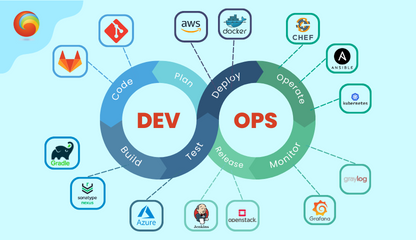The GenAI Divide:
Why 95% of AI Projects Fail
(And How to Be in the Winning 5%)
$30–40 Billion Spent. Almost Nothing to Show.
Businesses have invested $30–40 billion in Generative AI pilots. But MIT's State of AI in Business 2025 report delivers some tough news: 95% of companies achieved zero measurable payoff.
Not because the technology isn't ready. Because most businesses aren't rolling it out correctly.
MIT researchers call this the GenAI Divide. On one side: organizations stuck in endless pilots with no impact on the bottom line. On the other: just 5% of firms who are extracting millions in ROI by deploying AI systems that learn, adapt, and integrate into real workflows.
Why Most Pilots Crash and Burn
- Brittle workflows. Tools break when dropped into unstructured business processes.
- No contextual learning. Systems forget context, can’t retain feedback, and repeat mistakes.
- Misaligned with daily operations. The tech doesn’t fit how people actually work.
“We’ve seen dozens of demos this year. Maybe one or two are genuinely useful. The rest are wrappers or science projects.”
— CIO
“The hype on LinkedIn says everything has changed. In our operations, nothing fundamental has shifted. We’re just processing some contracts faster.”
— COO, Manufacturing
The Real Barrier Isn’t Tech — It’s Learning
Most executives assume the bottlenecks are infrastructure, regulation, or talent. MIT found otherwise. The real issue is learning.
Current GenAI systems don’t:
- Retain memory.
- Adapt to context.
- Improve over time.
That’s why employees love ChatGPT for quick tasks, but when the stakes rise,90% still choose humans. AI isn’t failing because it isn’t intelligent enough. It’s failing because it doesn’t learn.

Why GenAI pilots fail? top barriers to scaling AI in the enterprise (Source: MIT AI Report 2025)
The Divide at Industry Level
The MIT report’s AI Market Disruption Index shows only two industries making real moves:
- Technology: disruptors like Cursor vs. incumbents like Copilot.
- Media & Telecom: rise of AI-native content and shifts in advertising dynamics.
Everywhere else — healthcare, finance, manufacturing, consumer goods — pilots are the rule, but transformation is an exception.

GenAI disruption varies sharply by industry (Source: MIT AI Report 2025)
The Pilot-to-Production Chasm
Here’s the brutal funnel:
- 60% of organizations evaluated enterprise-grade AI tools.
- 20% piloted them.
- 5% made it into production.
Chatbots thrive in pilots because they’re flexible and easy to test. But in critical workflows, they fail — no memory, no customization.

The Pilot-to-Production Chasm (Source: MIT AI Report 2025)
Big Enterprises vs. Mid-Market Movers
Ironically, big enterprises — firms with >$100M revenue — run more pilots, allocate more staff, and spend more money. Yet they have the lowest pilot-to-scale conversion rates.
Average timeline: 9+ months from pilot to production.
Mid-market companies? They move faster. Top performers hit full implementation in just 90 days.
Speed beats size.
Busting the Myths
MIT calls out five common misconceptions:
- AI Will Replace Most Jobs in the Next Few Years → Research found limited layoffs from GenAI, and only in industries that are already affected significantly by AI. There is no consensus among executives as to hiring levels over the next 3-5 years.
- Generative AI is Transforming Business → Adoption is high, but transformation is rare. Only 5% of enterprises have AI tools integrated in workflows at scale and 7 of 9 sectors show no real structural change.
- Enterprises are slow in adopting new tech → Enterprises are extremely eager to adopt AI and 90% have seriously explored buying an AI solution.
- The biggest thing holding back AI is model quality, legal, data, risk → What's really holding it back is that most AI tools don't learn and don’t integrate well into workflows.
- The best enterprises are building their own tools → Internal builds fail twice as often.
The Shadow AI Economy
While official initiatives crawl, employees aren’t waiting. Across 90% of companies surveyed, workers already use personal ChatGPT or Claude accounts daily. This “shadow AI economy” delivers better ROI than corporate pilots.
This “shadow AI economy” is delivering better ROI than corporate pilots. Companies that notice and learn from how employees already use AI are the ones crossing the divide.

The Shadow AI Economy (Source: MIT AI Report 2025)
Why Pilots Stall: The Learning Gap
MIT’s deep dive shows the common blockers:
- Resistance to new tools.
- Poor output quality in enterprise contexts.
- Bad UX.
- Lack of executive sponsorship.
- Resistance to new tools.
- Poor output quality in enterprise contexts.
- Bad UX.
- Lack of executive sponsorship.
But the structural reason is clear:learning. Tools don’t evolve. They require endless prompting and manual context.
Users love AI for small, simple tasks. But for complex, multi-week projects, humans still
dominate 9-to-1.

Survey on perceived fitness for high-stake work (Source: MIT AI Report 2025)
Organizational Design: How Winners Cross the Divide
The success pattern is consistent:
- External partnerships succeed ~67% of the time.
- Internal builds succeed ~33%.
Partnerships deliver faster time-to-value, deeper workflow integration, and lower cost.
Equally important: winners decentralize adoption. Instead of central IT dictating use cases, they empower line managers and power users to drive pilots. This bottom-up approach accelerates rollout and ensures relevance.

Organisational Structure: How winners cross the divide (Source: MIT AI Report 2025)
Where the Real ROI Lives
Forget flashy front-office AI. The back office is where the quiet revolutions happen:
- BPO elimination:$2–10M annually saved in customer service + document processing.
- Agency spend reduction: 30% drop in creative and content outsourcing.
- Compliance automation: $1M+ per year in savings.
These aren’t LinkedIn-friendly vanity metrics. They’re bottom-line wins.
The Future: Agentic AI & the Agentic Web
The next phase is agentic systems — AI with memory, adaptability, and autonomy.
- Procurement agents sourcing and negotiating deals.
- Customer service agents resolving cases end-to-end.
- Content workflows creating, editing, QA, and publishing autonomously.
This “Agentic Web” will replace today’s SaaS stack with interoperable, learning agents. Early movers who adopt this will build switching costs that lock in their advantage.
The Playbook to Cross the GenAI Divide
If you’re leading AI adoption today, here’s the straight talk:
- Stop funding endless pilots and flashy demos.
- Put money where ROI is real — back-office automation.
- Treat AI vendors like business partners, not software suppliers.
- Give power to line managers and operators, not just IT labs.
- Choose tools that learn, remember, and adapt.
Generative AI isn’t failing. Enterprises are.
95% of projects are stuck in pilot mode, burning time and money. But the 5% who’ve cracked the code are already saving millions, cutting waste, and building serious competitive moats.
The window to cross the GenAI Divide is closing. The only question is: will you be on the side still running pilots in 2026, or on the side building the future?



